Mark Sisson's Blog, page 141
May 19, 2018
One Sheet-Pan Shrimp and Broccoli with PRIMAL KITCHEN® Sesame Ginger Vinaigrette and Marinade
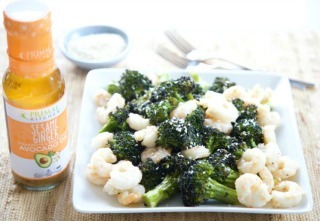 Primal Kitchen® Sesame Ginger Vinaigrette makes this meal a snap to cook. The dressing provides all the flavor, transforming roasted broccoli and shrimp into an incredible meal with sweet, sour and mildly spicy flavors.
Primal Kitchen® Sesame Ginger Vinaigrette makes this meal a snap to cook. The dressing provides all the flavor, transforming roasted broccoli and shrimp into an incredible meal with sweet, sour and mildly spicy flavors.
Broccoli really soaks up the dressing well. You’ll probably find yourself cooking broccoli this way again and again, even without the shrimp.
This one-sheet pan meal is easy to cook, and easy to clean up after. It’s a keeper, for sure.
Servings: 4
Time in the Kitchen: 30 minutes
Ingredients
1-pound shrimp, shelled and deveined (450 g)
¼ cup Primal Kitchen Sesame Ginger Vinaigrette and Marinade, plus more to drizzle over broccoli after it’s cooked (60 ml)
2 pounds broccoli, cut into small, evenly sized florets (900 g)
¼ cup avocado oil (60 ml)
½ teaspoon ground coriander (2.5 ml)
1/4 teaspoon salt, plus more to taste (1.25 ml)
Instructions
Preheat oven to 425 ºF/218 ºC
In a bowl, combine the shrimp with Primal Kitchen Sesame Ginger Vinaigrette and Marinade. Set aside.
On a sheet pan, toss the broccoli florets with avocado oil, coriander and salt, until evenly coated. Spread broccoli across the sheet pan. Roast 12 minutes.
Stir the broccoli, then add the shrimp to the sheet pan, scattering it around the broccoli. Roast the shrimp and broccoli another 10 minutes, until the shrimp is cooked.
Drizzle a little extra Primal Kitchen Sesame and Ginger Vinaigrette over the broccoli and shrimp before serving.
The post One Sheet-Pan Shrimp and Broccoli with PRIMAL KITCHEN® Sesame Ginger Vinaigrette and Marinade appeared first on Mark's Daily Apple.



May 18, 2018
We Can Now Look Forward To Healthy Retirement Years
It’s Friday, everyone! And that means another Primal Blueprint Real Life Story from a Mark’s Daily Apple reader. If you have your own success story and would like to share it with me and the Mark’s Daily Apple community please contact me here. I’ll continue to publish these each Friday as long as they keep coming in. Thank you for reading!
 My wife and I went Paleo 1/1/2016, initially guided by The Whole 30.
My wife and I went Paleo 1/1/2016, initially guided by The Whole 30.
My wife lost weight, and we both passed through carb flu hell. We became virtually illness-free and enjoyed extra daily hours of energy…but I gained weight.
I was committed to grain- and sugar-free living, but confused about my extra pounds. A colleague suggested The Primal Blueprint, which I confess I stayed up all night to read.
The Blueprint’s much more flexible approach to Paleo, or more properly “Primal” eating, snapped things into focus. I learned quickly that I was simply eating too much, and that potatoes (including most sweet varieties) didn’t make sense.
I also learned to dump my grimly desperate gym-rat’s approach to cardio and lifting. Coming up on age 60 in 2018, I now spend 75% of my workout time outside in the sun. Hiking dominates. I added a 20 lb. vest last year to boost intensity.
I now spend more time on my feet than seated, including a stand-up desk at work. I have to be reminded to sit down to eat.
My wife also appreciates the latitude to eat-when-hungry, and the mature, hype-free approach to wine, dairy, chocolate and other “gray area” foods.
We have both lost 30 lbs. I have been sick exactly ONCE since going Primal (first time in 26 months) and have not seen a physician at all. Kathy, a teacher exposed to constant sneezing and coughing students, is ill far less often than her pre-Primal days.
At one point, my weight loss stalled. I went back the Blueprint and realized we were eating a lot of organic chicken. “Organic” doesn’t guarantee correct omega fatty acid ratios, so we reduced our chicken consumption 50%—replacing it with grass-fed beef. Within a few weeks, not only did I lose more pounds but suddenly dropped 3 inches in my waist. It was almost weird.
Even better, we can now look forward to healthy retirement years. My personal success with Primal living got me started researching its long-term health benefits. I now believe we have a real chance to enjoy a disease-free “live long, drop dead” old age.
Timely updates from MDA are a big help, of course. Mark’s patience and commitment to understanding, and examining—not just rebutting—every new fad and study, is a great example to us all. I never hesitate to refer people to MDA, and visit daily.
While I have read many other books and articles about Paleo and Primal living, I am thrilled to say everything just reinforces the foundation I got from The Primal Blueprint.
I am also committed to getting the word out, and have started my own blog, which will be called Paleo55plus.com, devoted to healthy aging through ancestral life choices.
In the face of unprincipled corporate interests and their stranglehold on “popular” information, all we can do is keep sharing our stories and results.
If we have to convert the grainiacs one a time, it’s still worth it.
Grok henceforth!
David Whiteside
St. George, UT


The post We Can Now Look Forward To Healthy Retirement Years appeared first on Mark's Daily Apple.



May 17, 2018
11 (Non-Dietary) Actions That Enhance Insulin Sensitivity
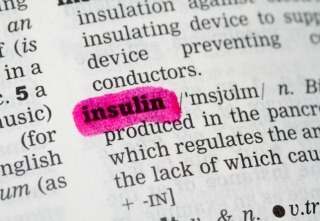 Insulin does a lot of important things for us. It pulls glucose from the blood and fritters it away into our cells to be burned for energy or stored as glycogen. It prevents hyperglycemic toxicity to neurons, pancreatic cells, the arterial walls and the generation of excessive levels of reactive oxygen species. It even promotes muscle protein synthesis and helps augment muscular hypertrophy, especially following resistance training. Clearly, we need insulin. Without it, we’d die, as type 1 diabetics readily do without an exogenous source.
Insulin does a lot of important things for us. It pulls glucose from the blood and fritters it away into our cells to be burned for energy or stored as glycogen. It prevents hyperglycemic toxicity to neurons, pancreatic cells, the arterial walls and the generation of excessive levels of reactive oxygen species. It even promotes muscle protein synthesis and helps augment muscular hypertrophy, especially following resistance training. Clearly, we need insulin. Without it, we’d die, as type 1 diabetics readily do without an exogenous source.
But this process goes off the rails when our cells become resistant to the effect of insulin over time. We secrete too much. Our levels remain elevated. It becomes harder to burn body fat. In fact, we end up in even more efficient fat storage mode.
I’ve shared about nutritional means to enhance insulin sensitivity in the past. What about other non-dietary strategies?
Lose Weight
Since insulin resistance is often the body’s response to energy excess (too much energy in), losing weight (increasing energy out) improves insulin sensitivity. Losing abdominal fat is particularly effective for increasing insulin sensitivity.
Lift Weights
Lifting heavy things, particularly with great intensity, improves insulin sensitivity by an interesting mechanism: non-insulin dependent glucose uptake happens immediately after the workout, which allows your muscles to replenish glycogen without insulin. According to some researchers, “the effect of exercise is similar to the action of insulin on glucose uptake.” I’d say not having to secrete any insulin makes you effectively insulin-sensitive.
Practice Sprint Intervals
An overloaded, energy-replete cell is an insulin resistant cell. An empty, “starving” cell is an insulin sensitive cell. Any exercise that burns glycogen and leaves your muscles empty and gaping for more will necessarily increase insulin sensitivity.
I can’t think of a faster way to burn through your glycogen than with a high intensity interval training session. Hill sprints or rower sprints are sufficiently intense and comprehensive.
Do Full Body, High Volume, High Intensity Training
Glycogen depletion occurs locally: high rep leg presses will deplete leg muscle glycogen, but they won’t touch glycogen in your arms, chest, and back. To fully deplete all the glycogen, you need to do full-body movements.
CrossFit WODs and other similar metcon workouts that have you doing pullups, squats, sprints, pushups, box jumps, and other compound movements—at high volume, in the same workout, and with minimal rest—will drain your glycogen stores and reduce the amount of insulin you need to replenish them.
Trigger Your Relaxation Response
Maybe it’s the quieting of the sympathetic nervous system, the “flight or flight” stress pathway. Maybe brief glimpses of bodhi reduce the amount of insulin required to dispose of glucose. Whatever’s going on, meditation (and likely other relaxation response inducing activities) improves insulin sensitivity.
Trigger Some Oxytocin
So, researchers might have used intranasal oxytocin for their purposes. But oxytocin is what we secrete in response to positive social interactions like sex, good conversation, dinner parties, breastfeeding, cuddling, and petting animals.
Ensure Adequate, Quality Sleep
If you’re coming from a place of already-adequate sleep, getting better sleep isn’t necessarily going to help your insulin sensitivity (although it might confer other benefits). It’s the absence of adequate sleep that destroys insulin sensitivity. By sleeping well, you’re restoring what was lost.
Train At Altitude
One study found that altitude hiking at 4500 meters improved glucose tolerance and insulin sensitivity. This isn’t feasible for everyone (4500 meters is really quite high, and not everyone lives near a suitable mountain). And, in truth, some people just aren’t ready to climb a mountain and hike around (in the study, some participants with low DHEA-S levels didn’t get the benefits), but it’s one way to improve it. Find the closest challenge you can in your region of the country.
Train In a Fasted State
While training of any kind promotes better insulin sensitivity, training in the fasted state enhances this effect. One study found that relatively high-intensity “cardio” performed while fasted increased subjects’ insulin sensitivity beyond the group who did the same training after a carb meal, even in the context of a normally obesogenic high-fat, high-carb diet.
Just Take a Walk
As the Primal Blueprint fitness concept of slow movement suggests, a simple walk can be quite powerful, particularly if you string them together to form a daily walking habit. A walk is good for glucose control after meals, but regular walking can have impressive effects on insulin sensitivity.
Never Stop Exercising
In other words, stay active for life. In a recent paper, both sprinters (aged 20-90 years) and endurance athletes (20-80 years) had far better insulin sensitivity than sedentary controls. Absorb this point: insulin sensitivity didn’t decrease with age in the two active groups. Even the 90-year-old sprinter retained good insulin sensitivity. The sedentary controls? Not so much. That says it all, I think.
Thanks for stopping by today, everyone. Let me know your thoughts, additions and questions below.
The post 11 (Non-Dietary) Actions That Enhance Insulin Sensitivity appeared first on Mark's Daily Apple.



May 16, 2018
Intermittent Fasting for Women: What We Know Now
 This is an updated version of a Dear Mark column from 2012. You can find the original version archived here. The below has been completely updated for 2018.
This is an updated version of a Dear Mark column from 2012. You can find the original version archived here. The below has been completely updated for 2018.
The blank slate hypothesis has fallen. Everyone comes into this world imbued with attributes, characteristics, and predilections that are uniquely theirs. We’re all humans, but we’re a diverse bunch, and that makes it interesting. And though it also makes giving cookie cutter health advice impossible, I just take that as an opportunity to stand out from the crowd and provide actionable advice that genuinely helps real people.
A perfect example is biological sex. Anyone who’s lived with the opposite sex, been married, or had kids of different sexes knows that males and females are different—on average.
There’s a ton of overlap, don’t get me wrong.
We all need fat, protein, and carbohydrates. We all have the same requirements for sustenance and wellness. We all breathe oxygen, get stronger and fitter when we work out, use the same neurotransmitters, and produce the same hormones. The biological basics are identical.
It’s the details that differ. And matter.
Take fasting.
Fasting As Hormetic Stressor and the Influence of Biological Sex
Men and women both need to enter a “fasted” state in order to burn body fat. This should go without saying, but regularly undergoing periods where you’re not inserting calories into your mouth is an absolute requirement for weight loss and basic health, no matter your sex.
These periods are called “fasted states,” and they begin as soon as you stop processing the energy from your meal. An “intermittent” fast is an extended period of not eating done for the express purpose of weight loss and other health benefits.
By definition, a fast is a hormetic stressor—a stressful input (no food) that in the right dose triggers an adaptive response that makes us stronger and healthier. Fasting triggers Nrf2, the “hormetic pathway” also triggered by other hormetic stressors like exercise, polyphenols, and radiation. Nrf2 initiates a series of defensive and adaptive mechanisms that help you respond to the stress and buttress your body against future stressors. But with too large a dose, a hormetic stressor can become a plain old stressor—one that overwhelms our defenses and harms us.
Making matters more complicated, the size of a hormetic dose is relative. What’s hormetic for me might be stressful for you. Many different variables affect how much of a hormetic stressor a person can tolerate.
With fasting, perhaps the most important variable to consider is your biological sex.
This really does make intuitive sense.
Biology cares most about your fertility. Can you reproduce? Can you produce healthy offspring that survive to do the same? These things come first.
And from that perspective, a woman’s situation is more precarious than a man’s.
You have a finite number of eggs, or “chances.” Men have an almost infinite supply of sperm.
When you are preparing to get pregnant, your body needs extra nutrients to build up a reserve and “prime the pump.”
When you are pregnant, the growing baby needs a reliable and constant stream of nutrients for almost a year. After a man gets someone pregnant, his biological involvement with the growing baby is done. What or when he eats has no impact on the survival of the growing baby.
After you’ve given birth, the growing newborn needs breastmilk. To make that milk requires additional calories and extra doses of specific nutrients. Modern technology allows us to skip nursing and go straight to the bottle, but your body doesn’t “know” that.
It all points to women being more finely attuned to caloric deficits. For example, women’s levels of ghrelin, the hunger hormone, are quicker to rise after meals.
This isn’t just relevant for parents or parents-to-be. Even if you’re not interesting in getting pregnant and having kids, or you have children and aren’t planning on any more, the ability to do so is strongly connected to your health. Reproductive health is health. As far as your body’s concerned, having kids is the primary goal and you need to be ready to do it as long as you’re able.
Where does fasting come in?
Fasting is simulated starvation. Amidst the most critical junctures of the reproductive process, even a single skipped meal can register as trouble. The problem with intermittent fasting is that it’s not just a one time thing. It’s a regular occurrence. Depending on the schedule you follow, you might fast every day, every other day, or once or twice a week. To the mostly unconscious body whose primary concern is your fertility, that can be alarming.
What does this mean for women interested in intermittent fasting Unfortunately, there aren’t many studies examining this question in women. There are a few, and I’ll get to those. First, let’s move to animal research.
What Animal Studies Tell Us
In male rats:
No matter the duration or degree of nutritional stress, a male rat’s brain chemistry responds with similar changes. Nocturnal activity and cognition stay fairly stable, regardless of the intensity of the fast. If you push the fast long enough, males will get a little wonky and frantic, but overall they maintain pretty well. It’s like they’re equipped with the ability to handle nutritional stressors.
In female rats:
Any degree of nutritional stress (fasting or mere caloric restriction) causes increased wakefulness (during the day, when they normally sleep), better cognition (for finding food), hyper alertness, and more energy. In short, female rats become better at finding and acquiring food when they fast, as if their bodies aren’t as well-equipped to deal with the stress of going without food. They also become less fertile, while the males actually become hornier and more fertile (probably to account for the females’ plummeting fertility). Ovary size drops (bad for fertility), adrenal gland size increases (which in rats indicates exposure to chronic stress), and menstrual cycles begin to dysregulate in proportion to the degree of caloric restriction.
One recent study found that placing young rats of both sexes on an intermittent fasting schedule had negative effects on fertility. While the male rats had lower testosterone, the female rats stopped ovulating, had trouble sleeping, and experienced ovary shrinkage.
What Human Studies Tell Us
One study found that while IF improved insulin sensitivity in male subjects, female subjects saw no such improvement. In fact, the glucose tolerance of fasting women actually worsened. Another study examined the effect of alternate day fasting on blood lipids. Women’s HDL improved and their triglycerides remained stable; men’s HDL remained stable and their triglycerides decreased.
Later, both obese men and women dropped body fat, body weight, blood pressure, total cholesterol, LDL cholesterol, and triglyercides on a fasting regimen. These people were obese, however, and perimenopausal women were excluded from the study, so the results may not apply to leaner people or women in the perimenopausal window.
One study compared continual calorie restriction (lower calories a little bit every day) to intermittent calorie restriction (lower calories a lot every once in awhile, similar to fasting) in overweight and obese women. Both groups lost a similar amount of weight, but the intermittent restriction group lost significantly more lean body mass. As I’ve always said, the kind of weight loss we want isn’t “weight loss.” It’s fat loss and lean mass retention (or gain).
In the only heretofore extant human study on fasting and chemotherapy, seven females (including a 44-year old woman who was likely premenopausal, given when menopause usually onsets, though it wasn’t explicitly stated) and three males found that IF improved their tolerance to and recovery from chemotherapy.
Takeaway: male and female (mostly middle-aged, though that’s the population that generally gets cancer and undergoes chemotherapy) chemotherapy patients appear to benefit equally from IF.
What About the Effects of Training While Fasted?
One study looked at healthy men and women doing moderate intensity morning cycling either fasted (overnight) or fed (ate breakfast). Although both men and women displayed greater increases in VO2 max and resting muscle glycogen concentration in response to fasted cycling training, only men showed greater skeletal muscle adaptations when fasted. Women had better muscle adaptations when fed.
Another study placed both fasting and fed overweight women on an interval training protocol for six weeks. Both groups improved body composition and oxidative capacity to an equal degree. Being fasted or fed had no effect.
It’s sad to say, but that’s about it for fasted training studies in women. The vast majority deal with men.
How About the Psychological Effects Of Fasting?
In women, a two day fast shifted nervous system activity toward sympathetic dominance. Even though their cognitive function was unaffected, they were stressed out. In men, a two day fast shifted nervous system in the other direction, toward parasympathetic dominance. They were well-rested and relaxed. Their blood pressure dropped. Their cognitive performance improved.
How About Autophagy?
One of the main benefits of intermittent fasting is an increase in autophagy, the process by which our body clears out cellular debris and repairs damaged cellular structures like mitochondria. A decrease in autophagy is usually linked to increased aging; an increase in autophagy tends to stave off the ravages of aging. Fasting-induced autophagy is usually a good thing.
One of the most commonly-cited papers in the intermittent fasting literature is this one, which shows how short term fasting induces “profound” neuronal autophagy. Only that might not be true for both sexes; another study shows how while “male neurons” respond to starvation as we’d expect—by undergoing autophagy—”female neurons” respond by resisting autophagy.
Less autophagy isn’t necessarily a bad thing. Certain diseases take advantage of the autophagy process, turning it against us by clearing out and killing healthy cells, and women tend to be less vulnerable to these diseases. But if you’re a woman aiming for autophagy, fasting may not be as reliable an induction method.
My Conclusion…For Now
As it stands right now, I’d be inclined to agree that pre-menopausal (and perhaps peri-menopausal) women are more likely to have poor—or at least different—experiences with intermittent fasting (at least as a weight loss tool). That said, it appears to be a potentially gender-neutral therapeutic tool for chemotherapy, cancer, and age-related neurodegeneration patients.
So, Who Should and Who Shouldn’t Consider Fasting?
Have my recommendations changed?
If you haven’t satisfied the usual IF “pre-reqs,” like being fat-adapted, getting good and sufficient sleep, minimizing or mitigating stress, and exercising well (not too much and not too little), you should not fast.
These pre-reqs are absolutely crucial and non-negotiable, in my opinion—especially the fat-adaptation. In fact, I suspect that if an IF study was performed on sugar-burning women versus fat-adapted women, you’d see that the fat-burning beasts would perform better and suffer fewer (if any) maladaptations.
I would also caution against the already lean, already calorie-restricted woman jumping headfirst into IF. I mean, fasting is ultimately sending a message of scarcity to your body. That’s a powerful message that can get a powerful response from our bodies. If you’re already lean (which, depending on the degree of leanness, arguably sends a message of scarcity) and restricting calories (which definitely sends a message of scarcity), the response to fasting can be a little too powerful.
I’d also say that daily fasts, a la 16/8 or even 14/10, run the risk of becoming chronic stressors and should be approached with caution by women. Same goes for ultra-long fasts, like a 36 (or even 24) hour marathon.
Most of all, however, I’d simply suggest that women interested in fasting be cautious, be self-aware, and only do so if it comes naturally. It shouldn’t be a struggle (for anyone, really). It shouldn’t stop your cycle or make it harder for you to get pregnant. It should improve your life, not make it worse. If you find that fasting has those negative effects, stop doing it. It should happen WHEN (When Hunger Ensues Naturally), if it happens at all.
Some Warning Signs To Watch For
Weight Gain (especially in the midsection)
Insomnia
Muscle Loss or Reduced Performance In the Gym—It’s perfectly reasonable to suffer in the gym on fasting days, but watch out for persistent strength losses. If your fitness and strength levels are consistently trending downward, fasting may not work for you.
Infertility
Loss Of Your Period—Skip meals, not menstrual cycles.
Excessive Hunger—Feeling peckish is good for everyone and makes food taste better; constant satiation is a trap of modernity. But you shouldn’t be ravenous. Thoughts of food shouldn’t consume you.
The good news is that most of the ill effects of fasting are blatant and conspicuous. They don’t hide. They don’t lurk in the background. They’re really hard to ignore—so don’t!
Some Thoughts For Women Who Want to Fast
Instead of aiming for the longest fast you can tolerate, aim for the shortest fast that gives results. Don’t try to power through a 24 hour fast, braving headaches and foggy thinking and overpowering hunger. Do try eating dinner earlier so you get a good 12 hours of “fasting” simply by going to bed and eating breakfast at a normal time.
Don’t fast unless you have a good reason. Good reasons include:
Having significant amounts of fat to lose.
Your oncologist giving you the go-ahead to try using it to improve the effects of chemotherapy.
Your neurologist giving you the go-ahead to try using it to improve brain function in the face of cognitive decline or dementia.
Bad reasons include:
Keeping the pregnancy weight at bay.
Going from 15% body fat to 12%.
To boost your 5x weekly CrossFit sessions.
Men and women have inherent metabolic and hormonal differences, and it’s evident that these differences in part determine how we respond to a stressor like intermittent fasting. I’ve never prescribed intermittent fasting as a requisite piece of the Primal lifestyle, but rather as an elective addition, a personal choice—only as a potentially therapeutic strategy that each individual must test for him or herself.
I generally fast when it makes sense – if I’m traveling and good food isn’t available, if I’m just not hungry, stuff like that. I periodically do 16/8 or 14/10 (i.e. eating in an 8 or 10 hour window) and find it works great for me because I am fully fat-adapted. But even I don’t hold rigidly to that. It’s not for everyone. And that hasn’t changed.
That’s it for me, today. What about you? If you’re a woman who has tried fasting, or know someone who fits the description, let us all know about your experiences. I’m intensely curious to hear from as many of you as I can. Thanks for reading.
By the way…because this is an updated version of a previous article (as I noted at the beginning), previous comments will still display. Keep in mind they may refer to the context of that previous article version.
The post Intermittent Fasting for Women: What We Know Now appeared first on Mark's Daily Apple.



May 15, 2018
Primal Snack Round-Up: 9 Tasty Options
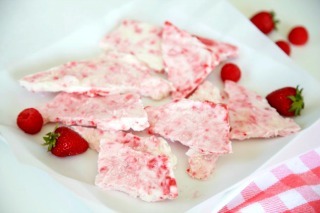 It’s certainly getting easier to find healthier snacks at the store, but the convenience of healthier, pre-packaged snack food often comes at steep price. For most of us, homemade snacks are still the most practical, budget-friendly option.
It’s certainly getting easier to find healthier snacks at the store, but the convenience of healthier, pre-packaged snack food often comes at steep price. For most of us, homemade snacks are still the most practical, budget-friendly option.
For convenience, stick with whole food snacks that require little or no cooking. Fresh fruit, cut up veggies, olives, pickles, nuts and nut butter, sardines, soft- or hard-boiled eggs, and high quality cheese are always delicious choices.
And when you have a little more time to spend in the kitchen, try one of these favorite Primal snacks.
Frozen Yogurt Bark

This tart and refreshing icy treat is great for hot days. Try different versions using frozen blueberries, mango, shredded coconut, nuts, or maple syrup instead of honey.
Kitchen Tools
9 ½ x 13 quarter-sized rimmed sheet pan
Parchment paper
Ingredients
2 cups full-fat plain Greek yogurt (470 g)
3 tablespoons wild honey, or more to taste
1 teaspoon vanilla extract
1/2 cup sliced strawberries (85 g)
½ cup raspberries (65 g)
Instructions
Line the sheet pan with parchment paper
In a food processor, blend the strawberries and raspberries into a chunky puree.
In a bowl, mix together the strawberries raspberries, yogurt, honey, and vanilla. Use a rubber spatula to evenly spread the mixture across the sheet pan.
Put in the freezer until firm, at least 3 hours.
Break or cut the bark into pieces. Store in a sealed freezer bag in the freezer.
Salami Chips

It doesn’t get any easier than this. Simply bake salami until crisp, for a meaty chip option that’s delicious dipped into guacamole, artichoke dip,
salsas, and other dips.
Ingredients
Sliced uncured salami or pepperoni
Instructions
Preheat oven to 375 ºF
Bake salami for 10 minutes. Remove from oven and let cool until crisp.
Dark Chocolate and Citrus Macadamia Balls
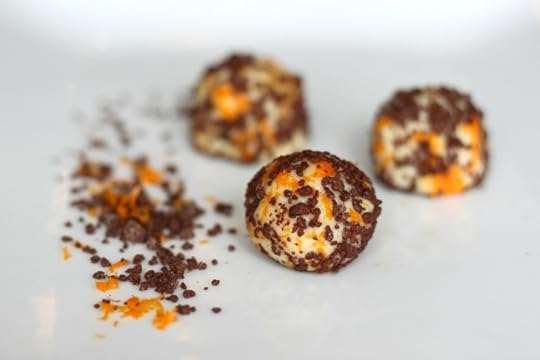
Marinated Olives and Nuts

Antipasto Italian Skewers

Vanilla Coconut Collagen Bites

Bacon Trail Mix

Instant Pot Buffalo Ranch Wings
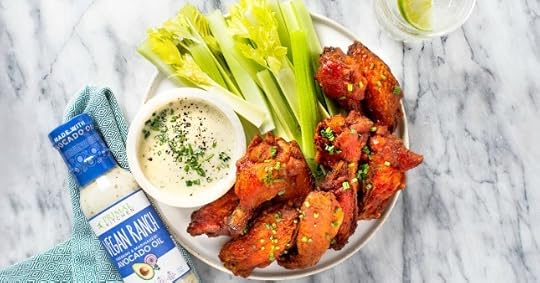
Collagen Fuel Fudgsicles

The post Primal Snack Round-Up: 9 Tasty Options appeared first on Mark's Daily Apple.



May 14, 2018
Dear Mark: More Coffee Questions (plus a Vegan Vitamin Addition)
 For today’s edition of Dear Mark, I’m answering five questions about coffee and one about vegan vitamins. First, was I wrong about Aeropress? Second, what’s my take on CA’s move to put a cancer warning on coffee? Third, is aluminum in coffee makers a problem? Fourth, how does instant coffee stack up? Fifth, how can a person figure out if mold toxins in coffee beans are causing “caffeine jitters”? And finally, are there any other vitamins I’d add to my recommendations for vegan keto dieters?
For today’s edition of Dear Mark, I’m answering five questions about coffee and one about vegan vitamins. First, was I wrong about Aeropress? Second, what’s my take on CA’s move to put a cancer warning on coffee? Third, is aluminum in coffee makers a problem? Fourth, how does instant coffee stack up? Fifth, how can a person figure out if mold toxins in coffee beans are causing “caffeine jitters”? And finally, are there any other vitamins I’d add to my recommendations for vegan keto dieters?
Let’s go:
Greg Armstrong wrote:
I did notice one small error in the filtered/unfiltered categories above. You listed Aeropress in the unfiltered category, but it uses a paper filter in the cap.
Whoops, you’re right. My main exposure to Aeropress has always been a friend who carries one around with him at all times to whip out a good cup of coffee whenever needed. Real coffee fanatic. He had a metal filter, and I figured they were standard.
Steve wondered:
Great read! I’m curious to know your thoughts on California’s plan to require a cancer warning on coffee. I’m not worried about it, but you likely know more than me.
I covered it a few weeks ago. Short answer: keep not worrying.
Elenor wrote:
Hey Mark,
You didn’t discuss the (actual/physical) coffee makers in relation to health. There’s a fellow on YT whose mother has Alzheimer’s and he (an engineer) began studying the coffee he made for her each day. The aluminum piping IN the maker, over time, puts more and more aluminum into the coffee… He tested a whole bunch of coffee makers (his, his mom’s, some neighbors’ and some he bought). They all put a LARGE amount of aluminum in the coffee! So he studied up some more, bought a bunch of makers (and tested the few he found in his ‘local population’) that are made with stainless steel piping — and they (obviously) did NOT put alum. into the coffee.
He (shows and) lists the coffee makers that use SS piping; I bought the Krups Moka Pot, which makes really good coffee (steams the water; so it’s half-way to espresso?)
Ah, here he is (and he does NOT sell coffee makers or coffee; he does sell his book about making what he calls “silicad”? That’s sodium silicate water that he says selectively binds and pulls the aluminum out of the body. He also provides some detailed answers in the comments (1, 2).
Haven’t ordered his book yet. Don’t know if I will — but replacing my old Cuisinart with its aluminum piping was as easy to decide on as replacing my aluminum cooking pots was!
That’s a really good point I hadn’t considered. Independent research (not from the fellow you describe) confirms that aluminum leaches readily into hot water, and that coffee makers specifically leach aluminum into the finished brew:
Boiling tap water in aluminum pans increased the aluminum content of the water to 17 mg per liter.
Making coffee in new percolators produced an aluminum content of 0.8-1.4 mg per liter; older percolators gave off less aluminum.
The World Health Organization recommends against consuming water with aluminum levels exceeding 0.2 mg per liter. This seems like a problem.
However, percolators don’t have pipes. The makers you described have aluminum pipes. When water flows through an aluminum pipe versus boiled in a large aluminum pot, more of it’s exposed to the pipe material and if the water’s hot, it’s going to leach way more aluminum. Most people are using conventional coffee makers with piping, not percolators.
Diamondheart asked:
What about instant? I usually drink Mt Hagen Organic Fair Trade instant. Pretty good taste, low acid, and no mess.
I sometimes keep that one around the house. It’s quite good if you add cream, I agree.
Instant coffee in general seems to be a good substitute for fresh brewed, healthwise.
It’s a strong source of antioxidant compounds, just like fresh coffee—or maybe even more so. In simulated intestinal conditions, those compounds are well-absorbed.
Some studies find links between instant coffee consumption and metabolic syndrome, but there’s a huge confounding variable: most people drink instant coffee as a “mix” with powdered creamer (not cream) and sugar added.
Saltybones asked:
Dave Asprey from Bulletproof warns about Mycotoxins forming during the processing of coffee beans, and being the source of the ‘jitters’ as opposed to the caffeine content. Anyone have any thoughts on this?
I haven’t been able to find any good research one way or the other. What you could do to test it out is take a straight caffeine pill and compare that to a cup of coffee.
Matthew Zastrow asked:
What about Vit D, K2, and A?
Yes, great additions.
You need vitamin D3, vitamin K2, and vitamin A in the form of retinol.
Vitamin D3: because few of us spend enough time in the midday sun to make our own, yet we all need it to maintain hormonal health and immune function and build and keep strong bones. The best food sources of vitamin D reside in the animal kingdom. If you’re abstaining from wild salmon, pastured pork, pastured eggs, you’re not eating enough. You could eat sunbathing mushrooms to get your vitamin D, though that’s in the form of vitamin D2 and arguably not as effective as D3.
Here’s a good vegan D3 supplement.
Vitamin K2: because we all want calcium to go where it belongs. In the absence of vitamin K2, calcium tends to end up in the wrong spots, like our arteries. In the presence of vitamin K2, calcium tends to end up in the right places, like our bones and teeth. Fortunately for vegans, the best source of vitamin K2 is natto—a fermented soybean. Unfortunately for vegans on a keto diet, natto is fairly high in carbohydrates, though you could probably squeeze in a serving a day and remain under your carb allotment.
Here’s a good one containing the animal form of vitamin K2. Pair that with some natto every once in awhile for the plant form and you’re covered.
Vitamin A (or zinc): because we’re not all good at converting beta-carotene into retinol. Given that synthetic retinol may be problematic, at least in the context of low vitamin D levels, and you can’t take good natural sources like cod liver oil, I’d urge you to make sure you’re maximizing your ability to convert beta-carotene (from plants) into retinol (the kind of vitamin A that animals like you use). That means eating enough fat with your vegetables to enhance absorption (not a problem, seeing that you’re keto) and obtaining enough zinc from food or supplements to enable proper conversion.
This is a good zinc.
That’s it for today, folks. Take care and be sure to chime in down below with your own input!
Want to make fat loss easier?
Try the Definitive Guide for Troubleshooting Weight Loss for free here.
The post Dear Mark: More Coffee Questions (plus a Vegan Vitamin Addition) appeared first on Mark's Daily Apple.



May 13, 2018
Weekend Link Love — Edition 503
 Research of the Week
Research of the WeekIntermittent fasting lowers oxidative stress and improves insulin sensitivity even without weight loss in men.
Lower microbiome diversity, more arterial hardening.
Deadlifts, not statins.
Keto is anti-inflammatory and anti-oxidant, and this could help fight neurodegeneration.
New Primal Blueprint Podcasts
 Episode 243: Lisa Nichols: Host Elle Russ chats with Lisa Nichols, one of the most impressive motivational speakers in the world with one of the best stories: single mother on public assistance to millionaire entrepreneur with a global empire.
Episode 243: Lisa Nichols: Host Elle Russ chats with Lisa Nichols, one of the most impressive motivational speakers in the world with one of the best stories: single mother on public assistance to millionaire entrepreneur with a global empire.
Each week, select Mark’s Daily Apple blog posts are prepared as Primal Blueprint Podcasts. Need to catch up on reading, but don’t have the time? Prefer to listen to articles while on the go? Check out the new blog post podcasts below, and subscribe to the Primal Blueprint Podcast here so you never miss an episode.
Interesting Blog Posts
Carnivory seems to have worked for her.
What’s the deal with type 1 diabetes and very low carb diets?
Media, Schmedia
The FDA looks set to approve a CBD-based drug for seizure control.
Even the deepest trench in the world has plastic bags floating around.
Everything Else
Fitness apps don’t work for most people.
Smartphones disrupt parent-child bonds.
More risk is good.
Things I’m Up to and Interested In
This is why I do what I want: Regrets over never pursuing our dreams hit hardest.
This is awkward: A recent study found that yoga and meditation don’t destroy the ego, they enhance it.
Question I’m pondering: What are facial expressions, really?
Of course they plan on finding a pharmaceutical analog: Fasting makes stem cells work better.
Another reason to really limit antibiotics unless absolutely necessary: They may lead to dysfunctional vaccine responses.
Recipe Corner
Broiled shrimp with beer and harissa. Lose the bread and choose a gluten-free beer if you’re extremely sensitive.
Cinco de Mayo has passed, but the food is still good.
Time Capsule
One year ago (May 6– May 12)
How Should We Harness Behavioral Economics for Better Health? – A few ways to capitalize on human irrationality.
10 Actions for an Anti-Stress Protocol – 10 things to start doing to beat back stress..
Comment of the Week
“It’s interesting to notice that the promoters of Roundup always say that glysophate is not toxic. Not that Roundup is not toxic, but that glysophate is not toxic. I’ve read somewhere (that i forget) that glysophate itself is pretty weak and ineffectual as a herbicide; glysophate alone is probably non-toxic. If you sprayed just glysophate on your lawn, you might see little to no effect. Roundup, on the other hand, is a concoction of many adjuvants to glysophate that disrupt cell walls so that glysophate can enter the cell and kill the vegetation. Always check to see if the person is defending glysophate by itself, or Roundup, the entire concoction. If they’re just defending glysophate they might be trying to confuse the issue.”
– I’ve noticed the same thing, Eric.

The post Weekend Link Love — Edition 503 appeared first on Mark's Daily Apple.



May 12, 2018
Keto Donuts
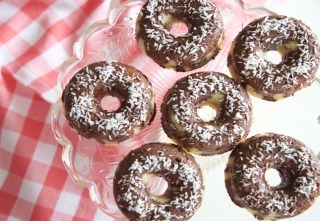 It takes less time to make these donuts than it does to drive to your local donut shop, and you’re rewarded with a yummy treat made from simple, pure ingredients. Almond flour, eggs, butter and heavy cream, plus the sweetener of your choice, are the main (and pretty much only) ingredients in these Primal and keto cake donuts.
It takes less time to make these donuts than it does to drive to your local donut shop, and you’re rewarded with a yummy treat made from simple, pure ingredients. Almond flour, eggs, butter and heavy cream, plus the sweetener of your choice, are the main (and pretty much only) ingredients in these Primal and keto cake donuts.
These keto donuts have a light, springy, cake-like texture. They can be eaten plain, or drizzled with dark chocolate for a really delicious treat. Admittedly, they don’t taste like the sticky-sweet glazed donut at your local donut shop. Expect these donuts to be lighter, less sweet and to not inflict any sort of sugar crash after the last bite.
Yes, a donut pan is a frivolous kitchen tool to purchase, but it’s fun to have around. Donut pans can also be used to transform your favorite muffin recipes into “donuts” or to make miniature cakes.
Servings: 6 to 8 Donuts
Time in the Kitchen: 30 minutes
Ingredients
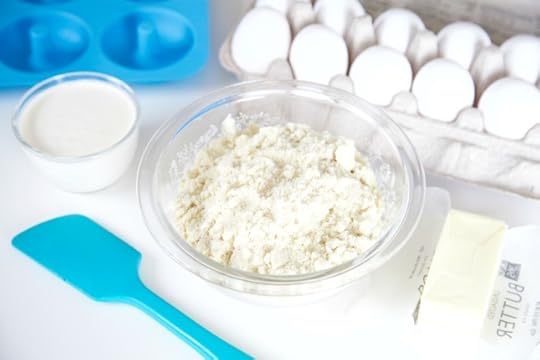
2 ½ cups finely ground almond flour (280 g)
¼ teaspoon baking powder (1.25 ml)
½ teaspoon baking soda (2.5 ml)
¼ teaspoon salt (1.25 ml)
2 eggs, separated
¼ cup unsalted butter, melted and cooled to room temperature (60 g)
3/4 cup heavy cream (180 ml)
½ teaspoon vanilla extract (2.5 ml)
½ teaspoon liquid stevia (2.5 ml) (or your favorite sweetener)
Kitchen Tool: Silicone donut pan
Instructions

Heat oven to 375° F/190 ºC
Lightly butter/grease the donut pan.
Whisk together almond flour, baking powder, baking soda and salt. Set aside.
Using an electric mixer, whisk egg whites until stiff peaks form.
In a large bowl, whisk together egg yolks, butter, heavy cream, vanilla extract, and stevia (or other sweetener) until smooth.
Gently fold the egg whites into the egg yolk mixture.
Gently fold the dry ingredients and the egg yolk mixture together.
Spoon the thick batter into the donut pan, using ¼ to 1/3 cup of batter for each donut.
Bake until the donuts are lightly browned on top and a toothpick inserted into a donut comes out clean, 15 to 17 minutes. Allow donuts cool for 10 minutes in the pan before removing. Continue cooling the donuts on a wire rack.
Serve plain, or drizzle with melted dark chocolate and top with coconut shavings.


The post Keto Donuts appeared first on Mark's Daily Apple.



May 11, 2018
Food No Longer Runs My Life
It’s Friday, everyone! And that means another Primal Blueprint Real Life Story from a Mark’s Daily Apple reader. If you have your own success story and would like to share it with me and the Mark’s Daily Apple community please contact me here. I’ll continue to publish these each Friday as long as they keep coming in. Thank you for reading!
 I’ve been wanting to share my success story for a while now, and finally decided to sit down and write one!
I’ve been wanting to share my success story for a while now, and finally decided to sit down and write one!
A little bit about my background, I grew up in Thailand as a child, and was a competitive swimmer since I was five years old. I was really talented and swimming was pretty much my life. I would go to competitions almost every weekend. I was quite small for my age, therefore my swim coaches and my parents would force me to eat. The “You are not leaving the table until you finish two full plates of rice” kinda thing. My diet since I was young consists of, a lot of rice and noodles, typical Asian diet. Every summer I would attend swimming camp, where most of the days are spent training and pretty much forcing me to eat. I honestly still hold a grudge on my parents about this, but they didn’t know any better.
Fast forward a couple years, my parents divorced. My mom and younger sister moved to New York City abruptly, leaving father and I behind. I was still swimming at that point and went to competitions. The point I am trying to make is that I have always been very athletic.
A couple of years passed, I moved to New York City to be with my mom and sister and slowly adopted the American way of eating, pizza, sandwiches, cereal, you name it. Also, still eating Thai food, as there are Thai restaurants everwhere. I slowly started to gain weight starting in high school, as I was eating two bagels with extra butter for breakfast. My weight climbed up to 145lbs at 5’4”. I know I wasn’t “Fat” but felt really uncomfortable in my skin.
By the end of high school, I started waitressing at a cool little burger place called Island Burgers and Shakes in the heart of Hell’s Kitchen, Manhattan. The constant walking kept me in okay shape but I was still not feeling like I was in the best shape I can be. I always had extra pounds on my stomach, back, and thighs.
Fast forward another couple of years, I met my then partner who introduced me to the Primal Lifestyle. He was looking to lose weight and I joined him on his journey. Not only to support him but I was also ready for a change. He discovered Mark’s Daily Apple. We started by consistently reading the article and of course reading the Primal Blueprint.
I started to realize that everything Mark was saying just made perfect sense. We didn’t evolve to eat all these processed foods and carbs. We were always supposed to eat real food. Slowly, we both changed our diets completely. It took several months, but the weight steadily came off. I went from being about 135lbs to 120lbs. I was 22 at that point. I never looked better and felt amazing.
After two years relationship ended. I was pretty depressed from the break up. I went off the wagon and went back to my old habits of eating unhealthy foods, late night eating, plus drinking to drown my sorrows. I was no longer living my primal life, as I spent most of my time feeling sorry for myself and could care less about what I was putting in my mouth. My weight climbed back up to about 138lbs.

For the next couple of years, I was able to come back up from the dark hole and took better care of myself. I finished grad school, got a teaching job at a New York City Public School in Manhattan, still worked at Island Burgers part time, and living my life. However, I never lost the weight I gained after my break-up. I consistently drank, went out to dinners with friends, and just didn’t care about what I was eating. I wasn’t happy with what I saw in the mirror, but didn’t do anything about it. I would make a resolution every year and failed miserably.
When 2017 rolled around, I decided that it was time to change. I didn’t like how I looked, I hated what I saw in the mirror. I wasn’t happy with how my clothes fit and I knew that the Primal Lifestyle worked, because I’ve done it before. I started to go on Primal full gear. I eliminated grains, pasta, bread, rice, noodles, potatoes, and sugar. I focused on meat and vegetables.
I started off at about 137 lbs. I noticed that my weight wasn’t coming off as fast as I wanted, and realized that it was probably because I was consuming too many calories. So, I decided to skip a meal. I would only eat a small breakfast, a big lunch, and skipped dinner. I was no longer swimming and the only moving around I was doing was when I was teaching in the classroom.

My weight slowly and steadily came off. Right now, April 2018, at 31 years old, I am 118-119 lbs and feel absolutely amazing. I finally look in the mirror and feel great about myself. I do get comments that I’m now too skinny, but all that matters is that I feel great. Since going back to my primal life style a year ago, I no longer depend on food. I used to think about food and what to eat all day long. Now, I no longer live my life that way, I’m rarely hungry and have very low appetite. Food no longer ran my life.

This is how I eat almost everyday:
Breakfast
3 organic soft boiled eggs
Coffee with a splash of heavy cream
On Weekends (When I have time to actually make breakfast)
3 fried or scrambled eggs with Applegate bacon
Or cream cheese pancakes with honey
Lunch
A Big Ass Salad (like Mark’s)
Or meat and vegetables like roasted broccoli
Or cauliflower pizza
An avocado
Chicken Salad
Snacks
Blue Diamond Almonds (Not the best, but I follow the 80/20 rule)
Sardines in olive oil
Dark chocolate (85% and up)
I usually skip dinner and just snack on a couple of almonds or cheese.
I still indulge on 1-2 glasses of wine a couple of times a week
Yes, I do cheat (Once a week on average). There are days that I would let myself eat whatever meal I want. I would come across situations where my partner and I would go to a nice restaurant (I live in New York City) I will allow myself to indulge. I have a weakness for a good vanilla ice cream and bread with butter. I no longer feel bad about “Cheating” as it’s planned, I know when, why and how I will do it. And the next day I go right back to my primal lifestyle.
The 80/20 Rule is truly a blessing. I follow that rule religiously and it makes me not feel bad when I do cheat. Life is too short not to sometimes indulge. But putting the food my body truly wants and needs 80% of the time, will make me live longer and without any illness. I see people around me constantly catching colds, having fevers, having life-long illnesses, I believe that living a primal life will prevent me from going through that.
I’ve never felt better in my life. But this time, I will never fall of the wagon. I wanted to truly thank Mark for changing my life. I still want to go down to 115 lbs and work really hard to maintain that weight.
These are a couple of random things:
1. I barely exercise. I don’t go to the gym, I don’t lift. All I try to do is walk a lot, when I can. It is so true that 80% is what you eat. I am a living example of it.
2. It is true that when your body is keto-adapted you are rarely hungry and you are completely not dependent on food. I see people around me being completely controlled by food and need to eat every couple of hours, so they don’t become hangry. I am happy I am able to not live my life that way.
3. I try my best to get at least 8 hours of sleep and spend time in the sun.
4. I have a really supportive partner, who doesn’t fully understand my primal lifestyle, but is accepting and tolerates my “unusual” eating habits.
Mark, you are inspirational and thank you for changing my life.
Casandra
Instagram: @Casandra.115


The post Food No Longer Runs My Life appeared first on Mark's Daily Apple.



May 10, 2018
Do Coffee Brewing Methods Matter For Health?
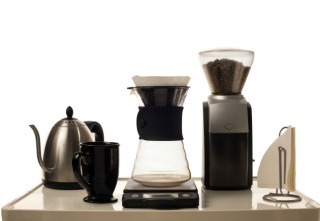 Coffee is a perpetual topic of interest, and for good reason: Almost everyone drinks it, almost everyone is passionate about it, and it’s pretty darn good for you. A recent post covered whether coffee breaks a fast or not. Before that, I told you how to make your coffee healthier. And on a regular basis, I cover something coffee-related in the weekly Dear Mark. One aspect of coffee I’ve never explored, however, is how coffee preparation and processing affects its health effects.
Coffee is a perpetual topic of interest, and for good reason: Almost everyone drinks it, almost everyone is passionate about it, and it’s pretty darn good for you. A recent post covered whether coffee breaks a fast or not. Before that, I told you how to make your coffee healthier. And on a regular basis, I cover something coffee-related in the weekly Dear Mark. One aspect of coffee I’ve never explored, however, is how coffee preparation and processing affects its health effects.
What’s healthier—filtered or unfiltered? Dark roast or light roast? Pre-ground or whole bean? French press or drip? Let’s get to it.
Filtered vs Unfiltered
Filtered coffee is coffee that runs through a paper filter, which catches most of the oils. Unfiltered coffee is coffee that doesn’t go through a paper filter; either it’s completely unfiltered (grounds directly in water) or it runs through a metal filter, which allows the oils to pass through. Unfiltered coffee is often referred to in the scientific literature as “boiled coffee.”
Filtered coffee includes drip, pour-over (unless you use a permanent filter that allows passage of the oils), and any method in which the coffee passes through a paper filter.
Unfiltered/boiled coffee brewing methods include French press, Moka pot/percolator, Aeropress, espresso.
Cold brew coffee can be either filtered or unfiltered, depending on what kind of filter you use to strain the final product.
Conventional wisdom is scared of those oils because they contain two lipid compounds called cafestol (great name for a coffee shop) and kahweol, high doses of which elevate cholesterol and suppress LDL clearance from animal models. That does sound bad; suppressed LDL clearance means LDL particles hang around longer in the blood to be oxidized and form atherosclerotic lesions. Do the animal mdoels transfer over to humans?
Maybe not. While 73 mg of purified cafestol a day for six weeks can increase cholesterol by a worrisome 66 mg/dL, the average cup of French press coffee contains between 3-6 mg; 73 mg isn’t a normal physiological dose. In one study, boiled coffee consumption was associated with a more modest 8% cholesterol increase in men and a 10% increase in women. That’s cholesterol, not LDL. Total. Besides, high fitness levels abolished the link in men, and boiled coffee was also linked to lower triglycerides in both sexes.
Or maybe. Another study found a modest association between high intakes of boiled coffee and non-fatal heart attacks. Then again, a similar (but smaller) association also existed with filtered coffee. Tough to say.
Cafestol and kahweol have beneficial effects, too. For instance, cafestol kills leukemia cells and kidney cancer cells. In mice, cafestol exerts anti-diabetic effects. Kahweol inhibits fat accumulation by activating AMPK (the same pathway triggered by fasting, exercise, and ketosis). Both compounds have anti-angiogenic effects.
Both boiled and filtered coffee reduce the risk of type 2 diabetes, but only boiled coffee confers a lower risk of prostate cancer. Liver enzyme levels drop when you consume boiled coffee, and when you inject rats with a known liver toxin, boiled coffee protects them against the expected rise in liver enzymes. Most evidence suggests that coffee, whether boiled or filtered, is protective against liver cancer, liver disease, and mortality from chronic liver disease.
If you want the unfiltered coffee with the most cafestol and kahwehol, brew a light roast using a French press or the boiling method. If you want the unfiltered coffee with the least cafestol and kahwehol, brew a dark roast using a Moka pot or use the Turkish method. If you want the least of all, use a paper filter.
If you’re a heavy consumer of unfiltered coffee and you worry about the cholesterol issue, get it tested. Go for a full lipid panel, one that includes LDL particle number.
Light vs Dark Roast
Coffee beans start out green and fairly uninteresting. It’s the roasting that brings out the flavors. The darker the roast, the longer it spends in the roaster.
Light roast advantages include less oil oxidation. The lighter the roast and the fresher the coffee, the lower the oil oxidation. Keeping it in whole bean form also increases the resistance, while grinding it prematurely will oxidize the oil and mar the taste.
Light roasts tend to have more caffeine, as the roasting process degrades caffeine. But caffeine content also depends on the bean; some have more than others.
Both are good, health-wise. Some studies suggest that dark roast has a better effect than light roast on antioxidant capacity in those who drink it. Light roasts tend to be higher in chlorogenic acids, which have been shown to improve subjective mood and ability to focus—even when the coffee is decaf. Medium roasts also have antioxidant effects.
They’re all good. Coffee just works.
Whole Bean or Pre-Ground?
Depends. I like whole bean, because keeping it intact until you’re ready to brew increases the oxidative resistance (more surface area means more oxidation), retains the aroma and flavor, and—this is seemingly minor but still important to me—I like the sound of grinding beans. The sound is a huge part of the ritual of coffee preparation. It’s the same reason instant coffee just isn’t the same as whole bean coffee. It’s almost too easy.
Healthwise, I imagine pre-ground beans are fine. Despite a huge number of people buying and drinking pre-ground coffee, coffee is consistently associated with health benefits in observational studies. If you believe the observational studies are pointing toward causality, ground coffee is good for you. And if you have the opposite relationship to grinding beans, and having whole coffee beans makes it less likely that you’ll drink coffee, go with the ground. It’s fine.
Water Quality
The quality of the water matters. Mineral content is the primary concern. A 2014 study sought to determine the optimal “hardness” for coffee water and found that the specific minerals causing the hardness made a big difference.
You don’t want too much bicarbonate. Bicarbonate is bad for coffee flavor.
Sodium was also bad for coffee flavor.
You want some magnesium. Magnesium is good for coffee flavor because it enhances the dissolution of coffee flavor from beans into the water. Since coffee flavor comes from the coffee compounds, and the coffee compounds are responsible for many of the beneficial health effects, better coffee is also probably healthier coffee.
I find adding a few dashes of Trace Minerals to my coffee brewing water helps the flavor.
My Favorite Way To Make Coffee
When you include coffee:water ratios, water quality, brew method, filter choice, ground size, and all the other variables, there are millions of ways to make coffee. I won’t get into all of them. I’m actually not a big coffee snob, although I do know a good cup when I taste it. I’ll just give my basic method.
French press, usually with a dark roast (although I’ll sometimes do medium, dark or light if I’m feeling wild). I’m really liking Caveman Coffee’s Blacklisted.
Grind size is a bit finer than most people recommend for French pressing. I use a blade grinder, which would get me excommunicated from most coffee geek circles, so my grind is probably less uniform than those using a burr grinder. Eh, tastes good to me.
1:12 coffee:water ratio.
Spring or filtered water, sometimes with a dash of Trace Minerals. Boil it, then turn off the heat and wait ten seconds.
Add it to the grounds, stir until it froths, cover, and press after 4 minutes.
Sometimes I make cold brew coffee concentrate:
12 ounces of light roast, something fancy and floral and fruity and acidic from a local 3rd wave coffee shop.
Grind medium-fine.
Mix with 60 ounces of cold spring water with a dash of Trace Minerals in a large glass jar.
Stir to combine, then let sit for at least 12 hours at room temperature. I’ve also experimented with letting it brew in the sun. That works quicker, but I prefer the taste of room temperature brewed cold brew.
Run it through a French press, store in glass bottle in the fridge. Drink it straight up, like little cold espresso shots, or with a dash of heavy cream.
That’s it for today, folks. I think I’ll go make another cup.
How do you make coffee? Tell me all about it down below.
The post Do Coffee Brewing Methods Matter For Health? appeared first on Mark's Daily Apple.



Mark Sisson's Blog
- Mark Sisson's profile
- 199 followers







